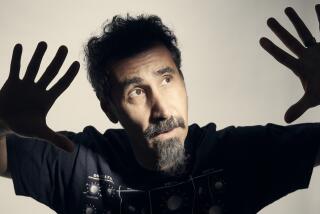Armenia, Still a Rubble Pile, Can Be Reconstructed With Our Help
- Share via
The hill is just outside Leninakan, one of thousands in the rugged, sweeping splendor of Armenia. Nine months ago it was just another hill. Today it is a cemetery.
It is just one of the poignant reminders of Dec. 7, 1988, the day a killer earthquake brought indescribable tragedy to Armenia.
The area was rocked again this month with powerful new quake activity, but as one local official put it, “There is nothing left to destroy.” What is left is a mountain of problems, and it is going to take additional American aid, both private and public, to help Armenia get to the solutions.
That is the conclusion my wife, Secretary of Labor Elizabeth Dole, and I reached during our recent tour of the earthquake zone. We were there to deliver medical and rehabilitation supplies from Project Hope, to evaluate reconstruction efforts and the needs of post-earthquake Armenia and to compile a personal report for President Bush.
The most urgent need is shelter. Winter is coming on fast as 500,000 people remain homeless. To put that number in perspective, the population of Armenia is 3.2 million. Everywhere, people are living in tents, in old boxcars, in tin shacks and in just about every other kind of shelter imaginable. All around are piles of concrete and twisted steel in Spitak, in Leninakan and in tiny villages that are simply no more.
In Yerevan, the Soviet republic’s capital, I convened a meeting of American volunteers--dedicated doctors, physical therapists, psychologists, architects and builders. It was the first such meeting, and one that I believe can lead to a better-coordinated volunteer effort in Armenia.
The two problems most often cited that day were difficulties in finding transportation for equipment and supplies from the United States to Armenia, and the paralyzing inefficiency and red tape of the Soviet system.
My staff and I are already exploring with the Administration whether there might be excess cargo capacity on planned military flights to destinations close to Armenia, which could be made available to voluntary agency shipments. We will also be talking to the Soviet Embassy in Washington about the inefficiency and red tape.
So far, private aid from the United States has totaled about $45 million and another $4 million has come directly from the government. Still, the need is great and I am convinced we can do more.
Despite our nation’s serious budget problems, and recognizing the built-in restraints of dealing with the Soviet Union, Congress should be able to find some additional aid this year to be channeled through a special commission: We want American aid going to American-run voluntary organizations so they can guarantee its efficient use.
While direct contributions of food and materials are still welcome, Armenia is in desperate need of technology, Western know-how and projects and programs that can become long-term and self-sustaining. For example, we can’t be satisfied with foreigners coming in to build new homes. New housing is desperately needed, but Armenians have to someday provide their own building materials. One project being considered is a plant that would produce cinder blocks from local materials.
Foreign food aid, as necessary as it is in the short term, presents similar problems.
Despite the continuing misery we saw, from the homeless to the families still grieving for their dead, we met hundreds of people and found a well of optimism--the warm smiles from the Armenian children said it best.
And, as we viewed the tragic past, we also caught a glimpse of the future. New housing is slowly coming along in some areas, including modular units from Italy, three-room homes from Austria and a mammoth high-rise project near Leninakan that has more than 100 cranes soaring to the sky.
We will remember much from our three days in the earthquake zone, but most of all we will remember the faces. The face of stoic determination on the Spitak city leader who watched the earthquake take the lives of his wife and 12 family members, but who is now leading the effort to rebuild. The face of the young mother who lost her only child but now begins a new life with the birth of a baby girl. And most of all, the faces on the children--hoping, and looking to us to help them rebuild the future.
More to Read
Sign up for Essential California
The most important California stories and recommendations in your inbox every morning.
You may occasionally receive promotional content from the Los Angeles Times.













